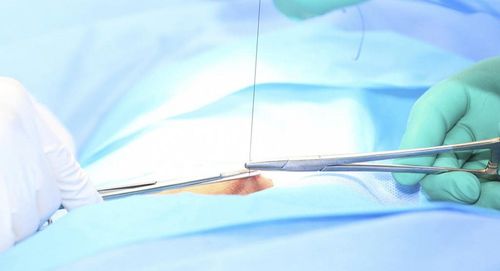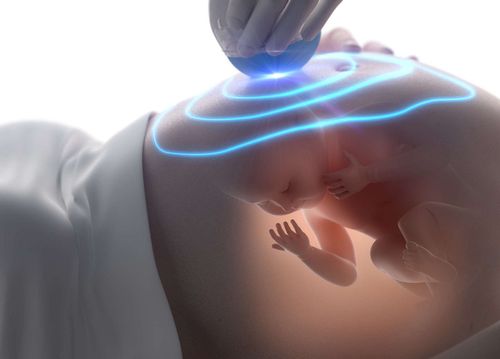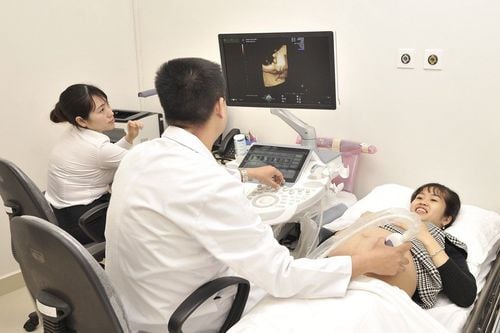This is an automatically translated article.
Monitoring fetal heart rate and measuring contractions by monitor plays a very important role. This helps to assess the health of the fetus, detect early fetal distress, detect abnormalities in contractions so that the doctor can take timely and correct treatment, ensuring safety for the pregnant woman and the fetus.
1. The meaning of using a monitor to measure fetal heart rate and contractions
Measure the monitor for what? The obstetric monitor records fetal heart rate and uterine muscle activity with a plot of CTG. The evaluation and analysis of the lines recorded at the CTG helps to evaluate the fetal heart rate characteristics and the activity of uterine contractions.
Monitoring fetal heart rate and uterine contractions with an obstetric monitor plays a very important role. Any deviation beyond the curve should also be analyzed, making the right conclusions during labor monitoring to avoid late intervention or unnecessary intervention, causing negative effects. affect the health of mother and fetus.
Thus, the purpose of monitoring fetal heart rate and measuring contractions with a monitor before and during labor is to detect abnormal manifestations for appropriate treatment and intervention. In addition to medical staff, the mother and her family also need to have the necessary understanding on this issue in order to cooperate in implementation. Monitoring needs to be carried out according to the guideline procedure in order to promptly detect fetal distress, abnormal uterine contractions, fetal heart response to uterine contractions for early intervention, to ensure a full pregnancy. square child.
2. Monitor fetal heart rate and measure contractions with a monitor
Continuous monitoring should be done closely before labor and during labor. This helps doctors detect unusual situations to promptly deal with possible complications.
2.1 Pre-labor monitoring Heart rate monitoring and contraction measurement before labor help assess hypoxia causing fetal distress. There are 2 pregnancy monitoring trials: the non-stimulating test (monitoring the fetal heart rate alone, without induction of uterine contractions) and the inducing trial (monitoring the fetal heart rate relative to uterine contractions). .
2.2 Monitoring during labor Fetal heart rate monitoring and contraction measurement during labor is indicated for all pregnant women if possible, applicable to high-risk pregnancies: women with diseases affecting the fetus, are old, have a history of heavy obstetrics, have signs of suspected fetal distress or intrauterine growth retardation, uterine contractions disorder, labor with premature rupture of membranes, premature rupture of membranes, prolonged labor or old uterus scars,...
Need to prepare equipment including an obstetric monitor to record uterine contractions and fetal heart rate. The mother should be explained about the purpose of monitoring and how it is performed. The technique is performed by placing a probe to record uterine contractions and fetal heart rate, record fetal heart rate chart and uterine contractions, and record some necessary information about the mother on the machine's paper tape. Analysis of results on: Fetal heart rate in terms of frequency, baseline fetal heart rate and fluctuations, changes in fetal heart rate during uterine contractions; uterine contractions in terms of frequency, amplitude, and basal tone of the uterus.
3. Analyze the curve of uterine contractions
Measure contractions with a monitor and analyze the curve as follows:
3.1 Normal uterine contractions Normal uterine contractions if the following indicators are present:
Basal tone: From 8 to 10 mmHg; Contraction intensity: Maximum amplitude of contraction regardless of basal tone; Frequency: Number of uterine contractions in 10 minutes: Latent phase: Average of 3 contractions in 10 minutes with intensity of 40 mmHg; Active phase: Average 3-4 contractions/10 minutes with intensity of 60-100 mmHg; When the cervix is nearly full: Average 4-5 contractions/10 minutes with intensity of 80-100 mmHg; Contraction & resting time of uterine contractions: Latent phase: Contraction time is 20 seconds, resting time is 3-4 minutes; Active phase: contraction time is 30-40 seconds, rest time is 2-3 minutes; When the cervix is near full: Contraction time is 40–50 seconds, rest time is 1 minute - 1 minute 30 seconds. 3.2 Abnormal uterine contractions Abnormal uterine contractions if the following are present:
Increased basal tone; Increase contraction intensity Increase contraction frequency. Causes of abnormal uterine contractions are: Pelvic head asymmetry, abnormal fetal position, placental abruption, improper use of tocolytic drugs (oxytocin) and incorrect indications.
4. Attention to monitoring and handling of accidents
In the process of monitoring fetal heart rate and measuring contractions with a monitor, the mother should not move much because it may change the position of the transducer, causing interference on the recording paper. If the fetal heart rate is disturbed, check the position of the transducer and the elastic band to fix the probe (to see the results more clearly). Every 10 minutes, you should see the results recorded on the paper once, if there is a fetal heart rate or abnormal uterine contractions, you should immediately check back for timely measures.
The management should be noted: Due to the supine position, the mother may be shocked with symptoms such as low blood pressure, rapid pulse, sweating, fatigue, ... and the fetus may be impaired with symptoms. shows slow, prolonged fetal heart rate (sometimes lasting up to several minutes). When detecting a pregnant woman with the above symptoms, it is necessary to change the mother's lying position with the left side position, giving the mother oxygen to breathe. If the fetal heart rate does not improve, it is necessary to find a way to remove the fetus as quickly as possible.
Monitoring fetal heart rate and measuring contractions with a monitor is essential for doctors to detect abnormalities and promptly handle them, ensuring that the health and life of the mother and fetus are not affected.
Please dial HOTLINE for more information or register for an appointment HERE. Download MyVinmec app to make appointments faster and to manage your bookings easily.













